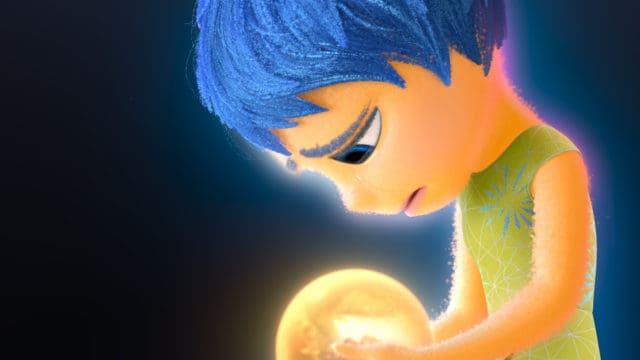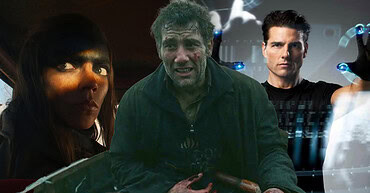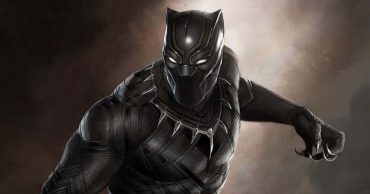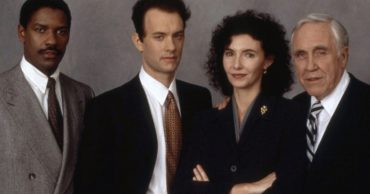
5. Toy Story 3 — When it comes to lists of “best Pixar movies,” there’s no getting around including at least one Toy Story on the list. They are the major through line of the increasingly diverse body of work performed by the animation studio: they’re the dependable old franchise that everybody comes to see.
Choosing which one, however, proved to be a daunting task. The first film was the purest distillation of the concept: toys come to life when not in the presence of their owners and have rich, interior lives all their own. The second film remains the most enjoyable; while Woody’s character arc takes an unexpectedly dark (if rewarding) turn, the rest of the cast remained funny enough to keep the entire production from sinking into a depressive funk. The third film, while the most flawed of the bunch, is the most thematically rich in the series, and brings the entire franchise to a satisfying, bitter-sweet end.
While I would doubtless pick a different movie depending on what mood you found me in when forced to choose, Toy Story 3 is probably the best of the trilogy. While 2 took it from a light buddy comedy to serious drama, it only really did so for one character: Woody. 3, however, forces its entire, expansive cast to contend with the same realizations that Woody did earlier in the franchise, and did so with the expertise and even-handedness that became expected of Pixar after nearly two decades of filmmaking.

4. Coco — Although the latest Pixar adventure bears considerable resemblance to the also-excellent Book of Life, such comparisons are really only skin-deep. Both involve a musically inclined protagonist (whose staunch, traditionalist family can’t understand their vocational preferences) venturing into the Land of the Dead on DÃa de los Muertos to reunite with their deceased ancestors and right the wrongs done to those in the Land of the Living. The difference in how the two movies present these basic premises is the difference between night and day.
Coco is both more personal and more adult than its 2014 counterpart. It is less focused on Grimm-esque morality tales, high-concept adventure and even breathtaking visuals (although there is still plenty of all three to be found over the course of its nearly two-hour runtime) and instead tells the intensely personal story of a young shoemaker trying to come to terms with who he is as an individual compared to who he is as a member of a large, well-to-do Mexican family. It is thematically rich and emotionally cathartic in the way that only Pixar seems to be capable of pulling off.

3. The Incredibles — With the long-awaited sequel to this playful update to the superhero genre coming out next year, it warrants looking back on the reasons why the film was so demanded to begin with. While hardly an obscure film — it is, after all, made by Pixar — it is perhaps one of their lesser known, and even lesser regarded, outings. Especially now that superheroes have become all the rage in this industry, The Incredibles seems strangely unique in its now-idiosyncratic approach to the material.
And despite multiple attempts to make the team work on the big screen, The Incredibles remains the best and truest-to-form version of the Fantastic Four — Marvel’s first family of superheroes — that we’re likely to see before Fox sells them the super-team’s film rights back to them. The characters were richly developed, the world both lived-in and realistic and the action scenes some of the best to be found in either live-action or animation.

2. Finding Nemo — If Toy Story was what sold Pixar’s unique vision to the world, Finding Nemo was what cemented it into something concrete. What Toy Story tried to portray, Finding Nemo pulled off seemingly effortlessly. And what Finding Nemo achieved more than a decade ago, Pixar has scarcely been able to touch on to this day.
The problem with these kind of movies — epic quests to the far reaches of the world — is that there is very little that grounds them in what we all know to be real. This goes double for the “talking animal” movies that Western animators seem so incredibly fond of making. But Finding Nemo was different. It’s characters felt, perhaps more than any animated film that came before it, genuine. Their tragedies were poignant, their arguments familiar and their struggles as emotionally charged as anything seen on the big screen.

1. Inside Out — By the time Inside Out came along, Pixar was a known quantity. We had been taught, through decades of repetition, what to expect from the animation studio: the stories, the characters, the emotional beats and even the tangible borders of its high-concept premises. All of that, however, was turned inside out for this knockout punch of an adventure.
Although everybody seems to love it, nobody ever seems to give this movie enough credit for the masterstroke of storytelling that it managed to pull off. Yes, it is ostensibly about anthropomorphic emotions struggling to come to terms with each other and the unexpected changes that have consumed their lives. It is, however, also an intensely introspective look at one girl’s depression: how the emotional turmoil from the changing world around her shuts her off and isolates her from her family, nearly destroying them in the process. And when the bullheadedly optimistic Joy gives into Sadness — allows herself the cathartic release that she has denied herself for her entire life — it is one of the most powerfully moving scenes of any film ever released.
 Follow Us
Follow Us




